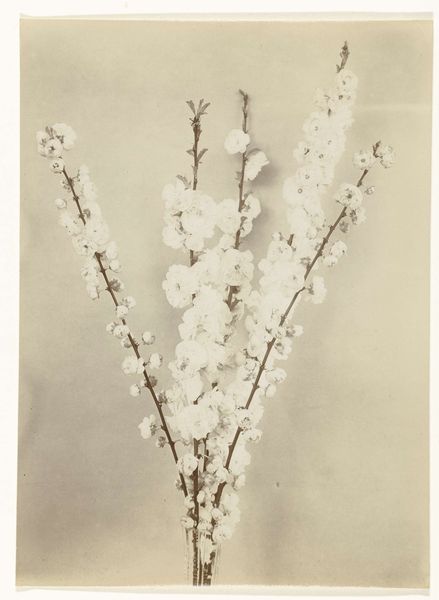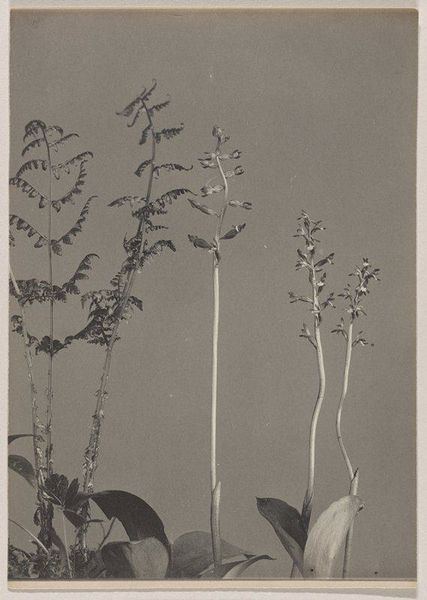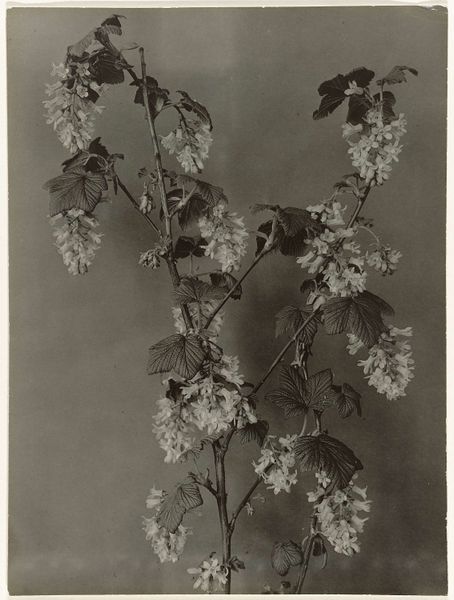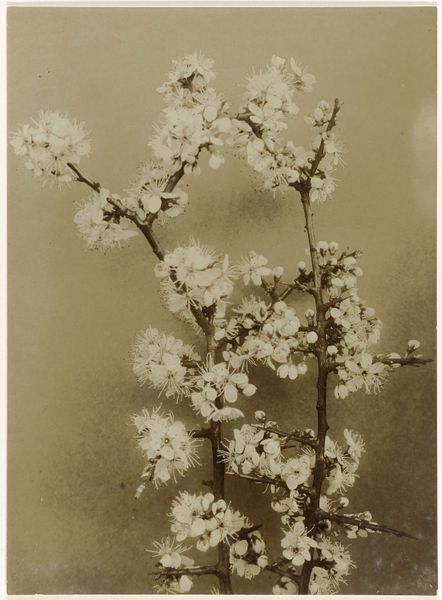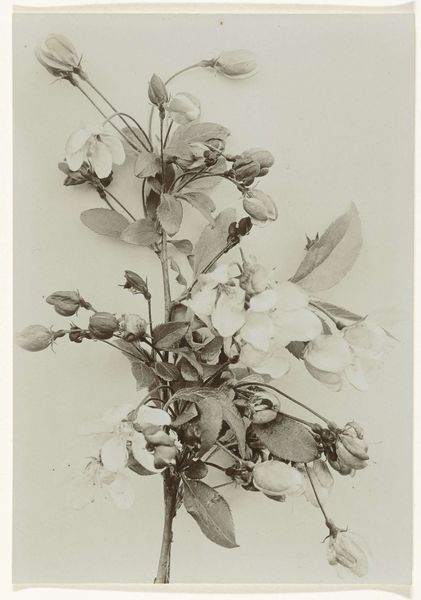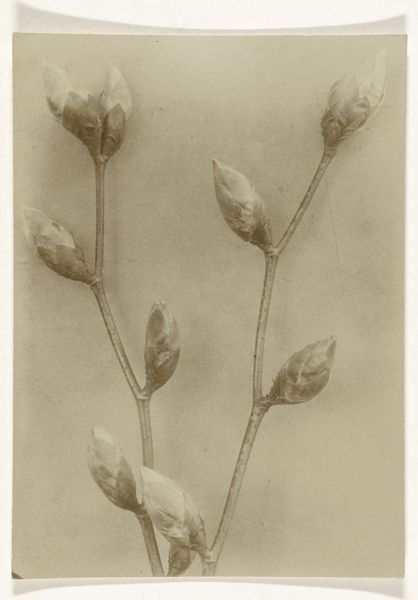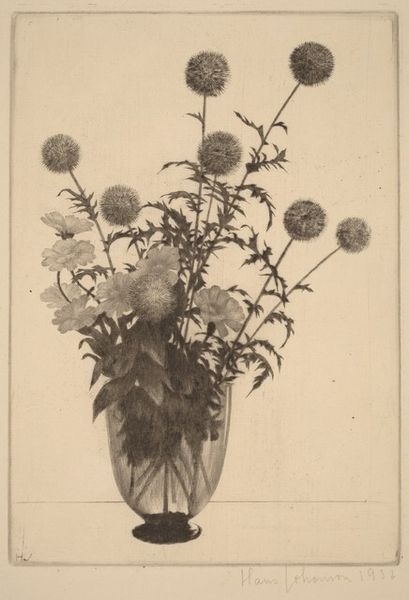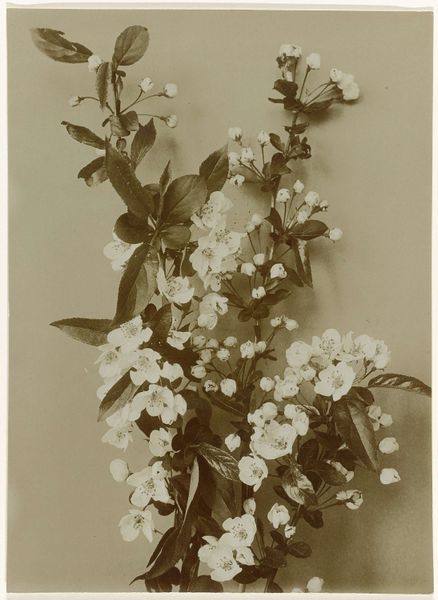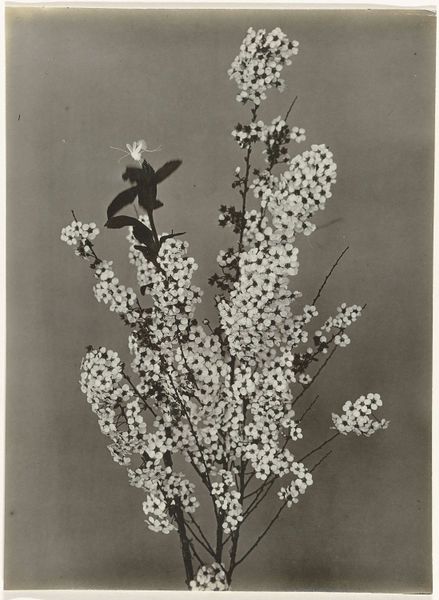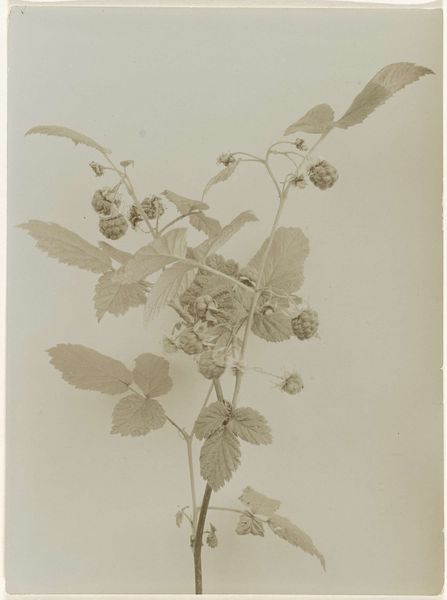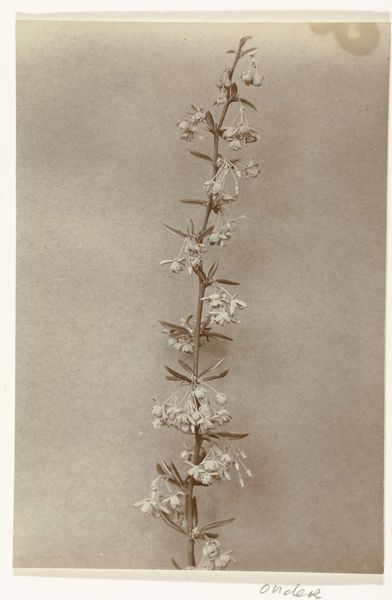
photography
#
photography
#
botanical photography
#
realism
Dimensions: height 161 mm, width 122 mm
Copyright: Rijks Museum: Open Domain
Editor: We're looking at "Branch of a Cotoneaster," a photograph by Richard Tepe, made sometime between 1900 and 1930. It's currently housed in the Rijksmuseum. There's something almost delicate, yet scientific, about the stark presentation. What strikes you most about this image? Curator: For me, it's the intersection of nature and industrial processes that is particularly engaging. Photography itself is, of course, a product of industrial advancements. I am interested in understanding how its specific methods of production - the darkroom chemistry, the photographic paper itself - influence our perception and categorization of this subject as 'art.' Tepe, by selecting and isolating this plant, prompts a critical engagement with both natural resources and mass production. Editor: I hadn't thought about the "making" of it so much. I was focused on the berries and the composition. Are you suggesting that the very act of photographic reproduction changes our relationship to the natural world? Curator: Precisely! Consider the materials. The photograph wouldn’t exist without the silver nitrate, the paper pulp, the specialized lens, and the labor required to bring all of this together. This challenges a romantic view of nature and demands consideration for material circumstances of its production. Editor: So, you see this less as a celebration of nature and more as an examination of… its commodification? Curator: In a way, yes. Think about the implications: This image can be endlessly reproduced and distributed, transforming a unique organic entity into a mass-produced object for consumption. How does that mass-reproducibility influence our interpretation of the artwork? Editor: This perspective is entirely different from how I would have initially approached it. It really reframes the work by focusing on what it *is*, not just what it depicts. I will have to sit with this interpretation, it is unexpectedly stimulating. Curator: Indeed. Sometimes shifting the frame towards materials allows us to expose unexpected perspectives within an artwork, as it challenges established categories of art history.
Comments
No comments
Be the first to comment and join the conversation on the ultimate creative platform.
